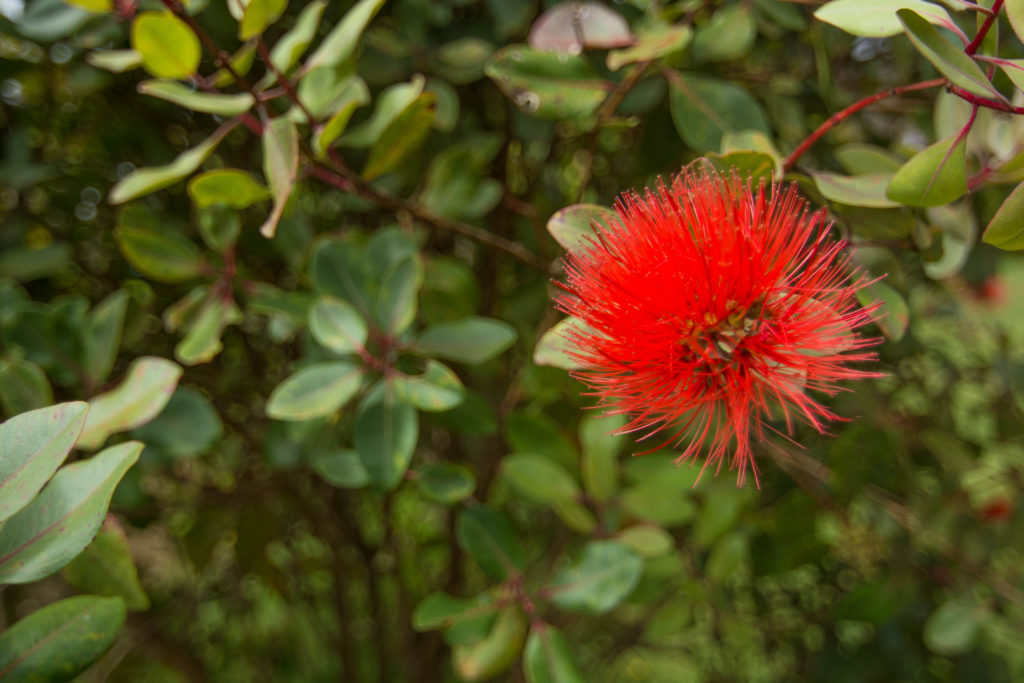Rapid Ohia Death

 How familiar are you with Rapid ʻŌhiʻa Death? Not only do we want to help educate our audience about the background of this awful epidemic, but we will also inform you how you can get involved to help make a difference! If you are off-island or choose to help in a financial way we will also provide an option for guests to donate a small portion upon booking your upcoming zipline tour!
How familiar are you with Rapid ʻŌhiʻa Death? Not only do we want to help educate our audience about the background of this awful epidemic, but we will also inform you how you can get involved to help make a difference! If you are off-island or choose to help in a financial way we will also provide an option for guests to donate a small portion upon booking your upcoming zipline tour!
Background
Ohia Lehua is the Keystone Species of the Hawaiian Watershed. If all Ohia disappear, the watershed could collapse. There is a fungus called Ceratocystis that is destroying native Ohia forests on the Big Island. So far 54,000 acres (10%) has been killed. This Rapid ʻŌhiʻa Death fungus is spreading rapidly to all areas of Big Island where Ohia trees grow.
So far Rapid ʻŌhiʻa Death has not been detected on any other island. It is very important to take immediate precautions to prevent the spread of ROD Ceratocystis inter-island. Scientists are projecting that this ROD epidemic is the worst extinction crisis the State of Hawaii has ever faced.
How does ROD Work?
There are actually two different varieties of the Ceratocystis (ROD) fungi that arrived on Big Island over the last 15 to 20 years. One strain came over from the Caribbean and the other came over from Asia. Scientists are baffled that the chances of two strains showing up at the same time and both infecting Ohia as the perfect host is 1 in a trillion! Think about the odds of that!!
Symptoms
The ROD fungus can infect an Ohia tree for up to one year before it shows any symptoms.
- Complete browning of all leaves of the canopy with in a very short time (2 to 3 days).
- Within two weeks the tree is completely dead (hence the name Rapid Ohia Death).
- The Rod fungus basically strangles the tree from the inside out.
- By the time the tree dies the cambium layer of the entire trunk is filled with black Ceratocystis fungus.
Treatment and Spreading
There are no known methods of treating infected trees. There are no known strains of Ohia that are resistant to Rapid ʻŌhiʻa Death. Ceratocystis (ROD) fungus is extremely sticky and has a fruity odor similar to rotting bananas. Once a ROD infected tree dies, there is an invasive species of wood boring Ambrosia Beetle that goes crazy infesting the tree and feeds off all of the available fungus. The frass (feces) of the ambrosia beetle that eats Rapid ʻŌhiʻa Death fungus produces microscopic saw dust that is filled with Ceratocystis and has been the main pathway for ROD to spread island wide. This sticky infected beetle poop-sawdust can easily stick to the shoes and clothing of a hiker, a vehicle, tools, chainsaws, and even wind dispersal.  Maui Involvement
Maui Involvement
Scientists are testing the dispersal of Rapid ʻŌhiʻa Death via wind. This is why it can infect a single tree in the middle of a forest. Scientists fear that ROD could reach Maui via wind from a Kona Storm. Scientists recently discovered that freshly open wounds on Ohia trees dramatically increase the potential to become infected if ROD is nearby. The most vulnerable stands of Maui Ohia forest are thriving on the Big Island facing Slopes of Haleakala including Kipahulu Valley and other areas of the East Maui Watershed.
Prevention from Spreading Inter-island
There are things we can do to help cease this awful disease from spreading to Maui.
- Monitor all Ohia trees .
- Keep your eyes open if you notice the instant death of an established Ohia tree. If this occurs, call MISC immediately (808-573-6475) to report. They will send over a team to collect a sample from the potentially infected tree and send it over to the lab on Big Island for testing.
- Do not transport any Ohia products from Hawaii Island , like Ohia logs, fence posts, firewood, wood chips, or lehua flower lei.
- Do not purchase any live plants from Big Island especially hapu`u fern or any other native plant that is taken directly out of the native forest. Nursery grown plants that are near infected ROD areas (which is now all over Big Island) are high risk of carrying the fungus.
- Clean shoes of anyone who travels from Big Island . A spray bottle of 70% Alcohol water or 10% bleach water mixture will kill any ROD fungus.
- Avoid wounding Ohia trees. The ROD fungus is known to immediately infect ohia trees with open wounds. Try to avoid creating weed-wacker damage to trunk or breaking of branches, especially in high traffic areas where people walk by.
- Clean Vehicles if shipping from Big Island. Clean the entire under-story of vehicles with strong soap. Remove all mud and dirt from tires and wheel wells etc.
We hope this helps shine some light on an important topic. Please share with your network so we can help make steps to prevent the spreading of Rapid ʻŌhiʻa Death to the other Hawaiian Islands. 